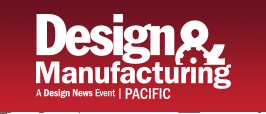When we attended the Christmas party for one of the small fabrication companies we represent in December 2018, the owner announced that employee bonuses would be less this year because his corporate tax rate went up from 15% to 21%. As manufacturers sales representatives, we wondered if other small corporations were being similarly hurt.
When President Trump signed the Tax Cuts and Jobs Act on December 22, 2017, business and economic experts lauded the reduction in corporate tax rates as one way to help American companies be more competitive in the global marketplace. The National Association of Manufacturers and the U. S. Chamber of Commerce had long complained that the U. S. had the highest corporate tax rate in the world at 39.1 percent, which the Tax Foundation explained was “a combination of our 35 percent federal rate and the average rate levied by U.S. states.”
Doing research, I found an article titled “Trump’s Tax Plan and How It Affects You” on The Balance website. I learned that the Act permanently cut the corporate tax rate from a progressive rate of 15 percent to as high as 35 percent down to a flat tax rate of 21 percent beginning in 2018, the lowest since 1939. Besides C corporations, the corporate tax rate also applies to LLC’s who have elected to be taxed as corporations. This rate does not apply to S corporations, partnerships or sole proprietorships, which are taxed at the personal tax rate, ranging from 10% to the new limit of 37%.
Most people didn’t realize that while the previous tax rate for corporations started at only 15%, and went up to 35 percent, the average “effective rate was 18.6 percent,” according to a 2017 report by the Congressional Budget Office.
At the Small Business & Entrepreneurship Council’s website, it states that “according to the Census Bureau’s Statistics of U.S. Businesses for employer C corporations in 2015, 99.0 percent of all business are small businesses” with fewer than 500 employees as defined by the Small business Administration; “96.4 percent of firms had fewer than 100” and “84.9 percent of firms had fewer than 20 employees.”
This means that the majority of C corporations paid tax rates well below the maximum tax rate of 35%. Therefore, the flat tax of 21 percent replacing is hurting low-earning corporations that were paying a lower rate and benefiting high-earning wealthy corporations.
The Balance website also states: “The Act allows companies to repatriate the $2.6 trillion they hold in foreign cash stockpiles. They pay a one-time tax rate of 15.5 percent on cash and 8 percent on equipment.”
The reason corporate monies need to be repatriated is that according to Wikipedia, “tax deferral is one of the main features of the worldwide tax system that allows U.S. multinational companies to delay paying taxes on foreign profits. Under U.S. tax law, companies are not required to pay U.S. tax on their foreign subsidiaries’ profits for many years, even indefinitely until the earnings are returned to U.S.”
Thus, repatriation benefited wealthy corporations because they are the ones that shifted manufacturing to subsidiary plants outside of the United States in the past 20 years. It is unlikely that any small business has a plant outside of the U.S., and thus wouldn’t have any profits stockpiled offshore to repatriate.
In the last two years, I wrote two articles about corporate tax reform at the federal level based on the Sales Factor Apportionment Framework proposed by one of the members of the Coalition for a Prosperous America, Bill Parks. Mr. Parks is a retired finance professor and founder of NRS Inc., an Idaho-based paddle sports accessory maker. He asserted that “Tax reform proposals won’t fix our broken corporate system… [because] they fail to fix the unfairness of domestic companies paying more tax than multinational enterprises in identical circumstances.”
He explained that multinational enterprises (MNEs) use cost accounting practices to transfer costs and profits. “Currently MNEs manipulate loopholes in our tax system to avoid paying U. S. taxes… MNEs can legitimately choose a cost that reduces or increases the profits of its subsidiaries in different countries. Because the United States is a relatively high-tax country, MNEs will choose the costs that minimize profits in the United States and maximize them in what are usually lower-tax countries.”
The way his plan would work is that the amount of corporate taxes that a multinational company would pay “would be determined solely on the percent of that company’s world-wide sales made to U. S. customers. Foreign MNEs would also be taxed the same way on their U. S. income leveling the playing field between domestic firms and foreign and domestic MNEs.”
On January 24, 2019. the Coalition for a Prosperous America (CPA) released a Press Release stating that a letter was sent to both the Senate Finance and House Ways & Means Committees asking “for consideration of both a destination-based Sales Factor Apportionment tax system (SFA) and a Strategic Goods and Services Tax (GST).”
A Goods and Services Tax (GST) is a strategic consumption tax, which would improve America’s trade competitiveness. The Release states: “Currently, foreign governments charge US exporters value-added (VAT) taxes—averaging 17 percent globally—at their borders. Most of these countries have reduced tariffs over the last 45 years—but replaced them with value added taxes. They use this new revenue to reduce other taxes and costs, and to fund national pension systems and health care. The US is virtually alone in not collecting value added taxes on imports.”
CEO Michael Stumo said, “Congress should fix this foreign trade advantage through an innovative and strategic consumption tax called a Goods and Services Tax…a 13 percent GST could raise $1.4 trillion in revenue and fund a full credit against payroll taxes, reduce personal income taxes, and provide a credit for healthcare costs. US companies would benefit from the cost reduction and receive a 13 percent GST rebate when exporting. Foreign companies would pay a 13 percent GST tax when bringing goods into the US.”
Stumo continued, “Tax reform can reduce our trade deficit, drastically reduce complexity and put even more Americans to work in good paying jobs. Congress should tax the profits and sales of all companies selling here and eliminate taxes on exports. The combination of an SFA and a strategic GST is the most pro-American tax system Congress could devise.”
It’s time that small American domestic corporations stop bearing the brunt of corporate taxes that benefit the large multinational enterprises. Bi-partisan tax reform that benefits all Americans should be made a priority by our newly elected Congressional Representatives and Senators.





